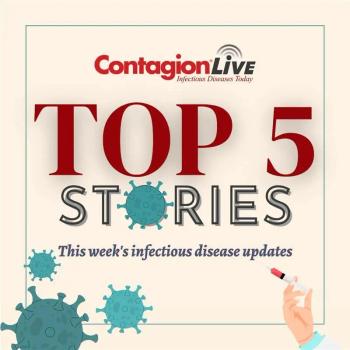A substudy of the ANRS 174 DOXYVAC randomized trial found that men who have sex with men (MSM) using doxycycline postexposure prophylaxis (DoxyPEP) had significantly higher rates of high-level tetracycline-resistant Neisseria gonorrhoeae compared with MSM who did not use PEP, raising new concerns about antimicrobial resistance (AMR) associated with this prevention strategy. The analysis also identified a greater frequency of isolates with decreased cefixime susceptibility among DoxyPEP users, although all isolates remained fully susceptible to ceftriaxone and cefixime.1
In the substudy, MSM receiving HIV pre-exposure prophylaxis were randomized to DoxyPEP (n = 362) or no-PEP (n = 183). Participants were tested for gonorrhea by culture and nucleic acid amplification testing at baseline and every 3 months. Minimum inhibitory concentrations were determined using Etest (Biomerieux) and interpreted per EUCAST guidelines, and whole-genome sequencing or PCR sequencing was performed on N gonorrhoeae isolates and NAAT-positive samples. Fisher’s exact tests were used for between-group comparisons.1
From January 2021 to February 2023, the investigators obtained MIC data for 78 isolates and performed molecular analysis on 233 NAAT-only positive samples. All isolates were tetracycline-resistant, but high-level resistance mediated by the tetM gene occurred significantly more often in the DoxyPEP arm (35.5%) than in the no-PEP arm (12.5%) (p = .043). MIC distributions for ceftriaxone, fluoroquinolones, and azithromycin were similar across study arms. All isolates remained susceptible to ceftriaxone and cefixime, but isolates with decreased cefixime susceptibility associated with the mosaic penA34.007 allele were more common among DoxyPEP recipients (32.3% vs 10.0%; p = .033).1
What You Need to Know
DoxyPEP recipients had significantly higher rates of high-level tetracycline-resistant N gonorrhoeae compared with those not receiving PEP.
All isolates were susceptible to ceftriaxone and cefixime, but decreased cefixime susceptibility linked to the mosaic penA34.007 allele was more common in the DoxyPEP arm.
Findings reinforce the need for AMR monitoring as DoxyPEP implementation expands amid rising global gonococcal resistance.
Investigators concluded that DoxyPEP use was associated with a significant increase in high-level tetracycline resistance and a higher prevalence of molecular markers linked to reduced cefixime susceptibility, emphasizing the need for close AMR surveillance as DoxyPEP adoption expands.1
These findings align with a broader pattern of emerging gonococcal resistance documented in recent research. Contagion previously reported on Debio 1453, a first-in-class FabI inhibitor that demonstrated potent activity against multidrug-resistant and extensively drug-resistant N gonorrhoeae in preclinical models and has now entered first-in-human testing, underscoring the need for new therapeutic classes as traditional agents lose effectiveness.2
Similarly, a genomics-based strain-selection analysis for an upcoming oropharyngeal gonorrhea controlled human infection model excluded thousands of isolates due to clinically significant resistance, highlighting how AMR increasingly shapes prevention, treatment, and vaccine-evaluation strategies.3 Together, these complementary data reinforce that the rising AMR burden in N gonorrhoeae, including shifts associated with DoxyPEP, requires ongoing surveillance and the development of novel antimicrobial and prevention approaches.
References
1.Bercot B, Assoumou L, Caméléna F, et. al. Antimicrobial drug-resistant Neisseria gonorrhoeae (GC) infections in men using doxycycline postexposure prophylaxis. A substudy of the ANRS 174 DOXYVAC trial, Clinical Infectious Diseases, 2025;, ciaf591, https://doi.org/10.1093/cid/ciaf591
2.Gerusz V, Regenass P, Rousseau Q, et al. The bactericidal FabI inhibitor Debio 1453 clears antibiotic-resistant Neisseria gonorrhoeae infection in vivo. Nat Commun 16, 8309 (2025). https://doi.org/10.1038/s41467-025-63508-w
3.Williams E, Low SJ, Pollock GL, et al. Selecting candidate Neisseria gonorrhoeae strains for oropharyngeal gonorrhoea human challenge: a genomics-based analysis of clinical isolates. Lancet Microbe. 2025;6(9):101105. doi:10.1016/j.lanmic.2025.101105



























































































































































































































































































